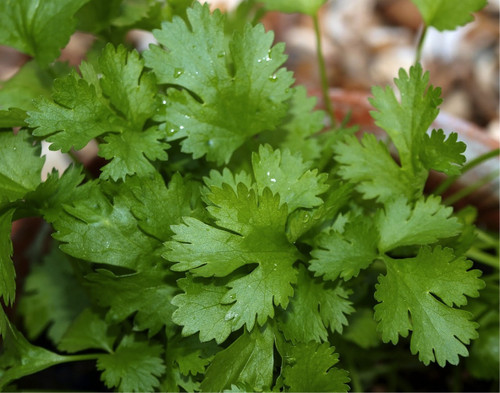Highly aromatic herb that produces clusters of lavender-blue flowers amid mounds of gray-green foliage. Growing only up to 30cm tall, it’s perfect in edges, flower pots, balconies, flower gardens. One of the most flowering plants used in groups creating beautiful flower mats. As its name implies, the catmint plant can be irresistible for cats. This perennial herb is known to induce a mild euphoria in animals, especially cats. The leaves and flowers can be steeped to make a soothing herbal tea with a mild minty taste and a sweet fragrance. They have a lovely minty flavor and a mild fragrance, making them a great aromatic addition to salads. Meanwhile, older leaves can be used as a potherb in cooked dishes. Aside from relieving tension and improving sleep quality, this herb also offers other health benefits. Catmint herbal tea can aid digestive problems such as upset stomachs, excessive gas, diarrhea, and nausea. It’s also good for respiratory problems such as cold, cough, and chest congestion.
It’s fragrance is also a mosquito, cockroach, harmful insects like ants and flea beetles as well as other pests like rats and mice repellent.
Growing: Year round in tropical climate. In temperate climates - Early spring, indoors, 4-8 weeks prior the danger of last frost is gone; direct seeding after the danger of last frost is gone and soil is workable. Transplant or direct sow in 4-6 weeks after the last frost date, once daytime temperatures are steadily above 10°C (50°F). Ideal temperature for germination: 21-27°C (70-80°F). Seeds should sprout in 10-20 days.
Soil: humus rich, well-drained with wide range of pH (5.0 to 8.0).
Sowing depth: Sow on the soil surface or barely covered with perlite. Thin plants or transplant to 30cm (12″) apart.
This plant does very well in containers, raised beds, or borders in full sun to partial shade. After the main bloom, plants should be cut back hard to encourage a second bloom and tidy shape.
Light: You will get the best flowering if you plant your catmint in full sun, however, the plants will also grow well in partial shade.
Moisture: regular to keep the soil well moist but not wet.
Fertilizing: Catmint is not a heavy feeder. In the first year after planting, a handful of compost, added to the plant’s base. In subsequent years, the plant needs no further fertilization.
The TSM Guarantee: It's our promise to ensure that all our products are strictly Non-GMO, and free from any possible harmful chemical compounds. All come from trusted and carefully selected small non commercial farmers worldwide providing fresh, safe supply.












